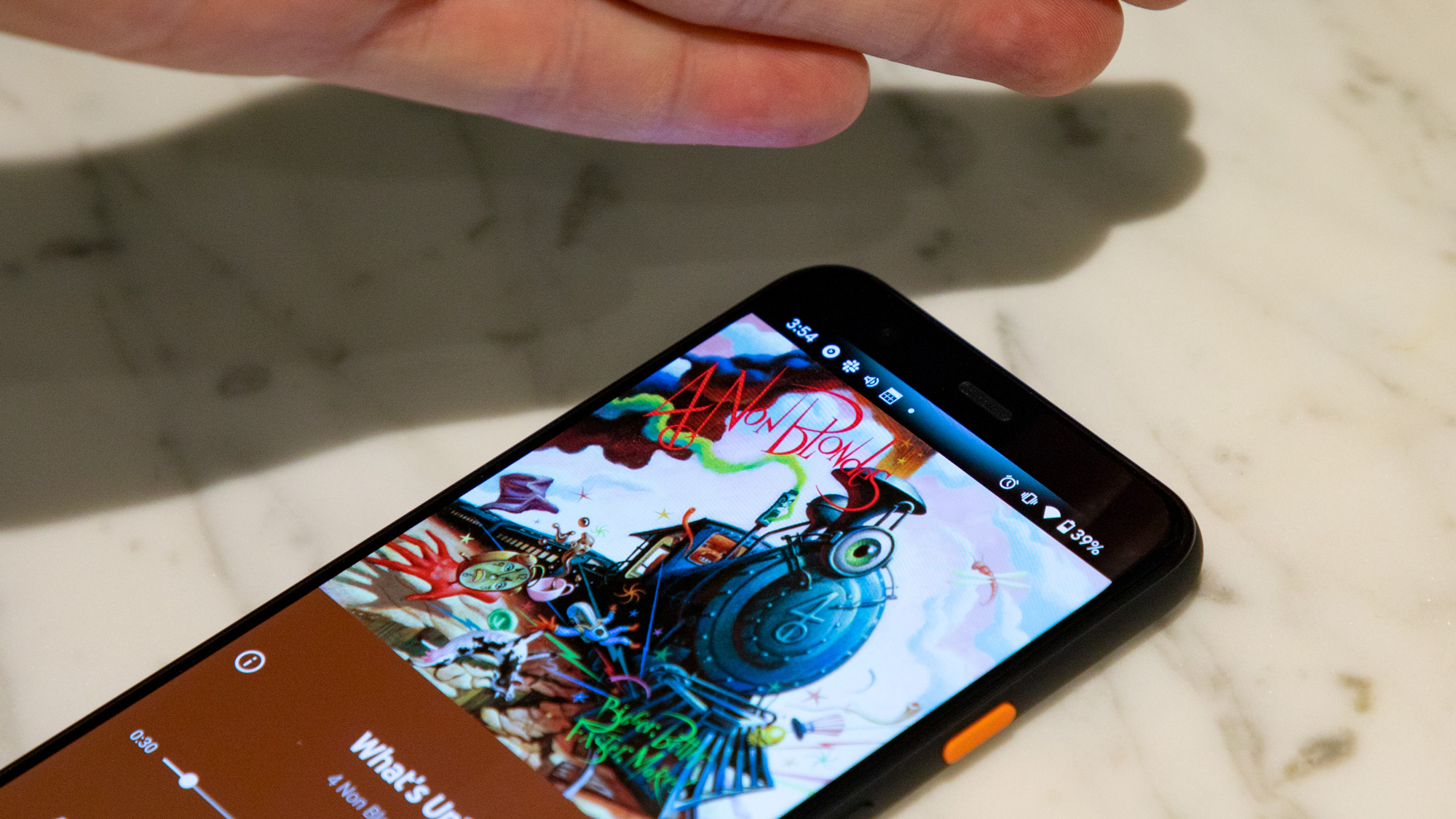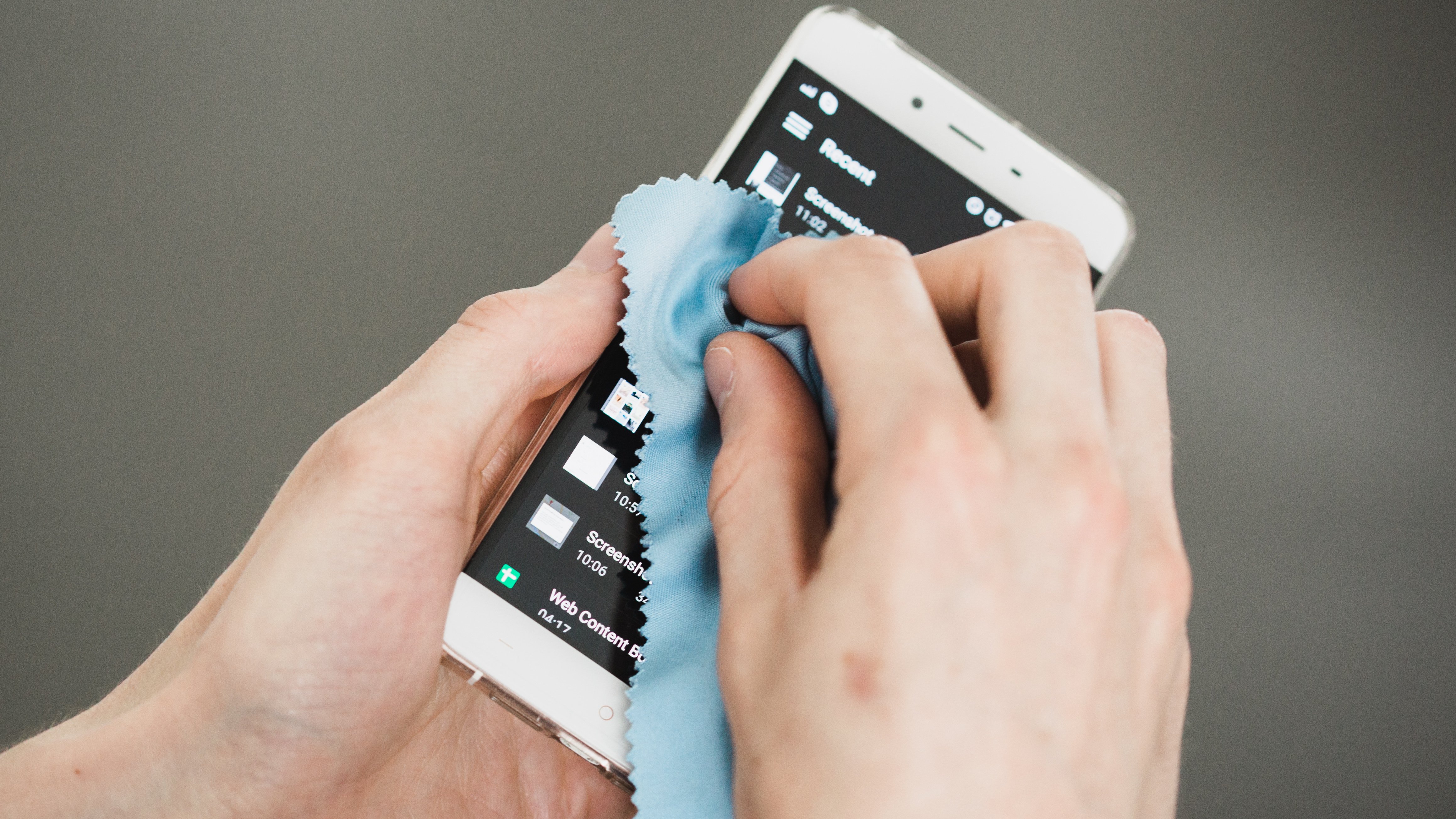Google Pixel 5 needs the Pixel 4's most maligned feature, because of Covid-19
Opinion: a handy - or hand-less - feature

One of the Google Pixel 4's most unpopular features - other than its lacking battery life - was Motion Sense, which was supposed to let you use various features of the phone by using gestures instead of touching the device. Despite this feature being limited, and most finding it didn't work as advertised anyway, in 2020 there's a big reason it should return in the Google Pixel 5: Covid-19.
Motion Sense was a feature, facilitated by the Soli chip in the Pixel 4 phones, which should have made accessing your phone without touching it easy. You could swipe through the air above the phone while playing music to skip songs, see your notifications just by moving your hand near the phone, and even wave to little Pokémon on your home screen.
Well, you should have been able to do those things, but many people found Motion Sense didn't work as intended. We found it a little challenging to get used to, and it had trouble differentiating between the various gestures and functions.
It seems Google got the message, because rumors suggest the Pixel 5 won't have the Soli chip, which likely also means motion gestures and hands-free phone use that the chip facilitated have got the axe too (unless Google has found a different means to implement the features).
In the year of Covid-19, though, I'd say that Motion Sense is actually an important inclusion in the Google Pixel 5 and actually many more phones would benefit from the feature too. Let's explore why.

Hands off that phone
Covid-19 has got everyone thinking more about hygiene and health - we now actively think about cleaning our phones and other tech, and think in new ways about the overlap of health and technology. This extends beyond keeping safe from coronavirus, and we're all more aware of cleanliness.
Our cleanliness conscience isn't exclusively reserved for coronavirus causes, either, but for pretty much any infectious ailments out there.
Sign up for breaking news, reviews, opinion, top tech deals, and more.
Now that we know bacteria can survive on surfaces like a smartphone, we've got to think of ways to stay hygienic when using such a device - and a perfect solution to that would be navigating a phone without actually touching it, just like the Google Pixel 4's motion sense provided.
There's barely any way of accidentally transferring germs from your hand to your screen, and back to your hand (or the digits of someone else handling your phone), if you're not actually touching it in the first place.
So if the Google Pixel 5 had Motion Sense that worked well, and didn't feel like a tester technology, it'd actually be genuinely useful in keeping users (and their phones) safe, clean and hygienic. But that's not how Motion Sense worked in the Pixel 4.

Pixel alterations
The Google Pixel 4's Motion Sense only worked for a few select functions, and it seems there are a few other major ones that would really benefit from the tech. It's worth also pointing out that the phone had facial recognition unlocking, so you didn't need to touch the phone to get it running.
Using Motion Sense in the Google Pixel 5 to swipe between home screen menus seems an obvious function that would really improve hands-free navigation - this would let you scroll through your app screens without dragging your finger across the display. In addition the ability to swipe up and down would be really useful for menus.
We can't think of an easy way to use the Motion Sense radar to select specific apps on a home screen, or entries on a list - but a quick tap of the screen to select an option is still a lot less touching time than actually swiping your finger along a portion of the screen, so this would still reduce the risk of dirtying your device.
This is just one small tweak, and it wouldn't stop the spread of germs entirely. A professor who studies infectious disease previously told TechRadar, “Good hygiene and disinfecting regularly touched items like doorhandles, surfaces and telephones are essential as it is very easy to transfer the virus onto your clean hands by touching something that someone with the virus has come into contact with or been in the vicinity of."
In terms of the Google Pixel 5, the tech would need to improve over how it worked on the Pixel 4 for this to be beneficial.

The future looks hands-free
The good news for people who like the idea of hands-free tech is that it seems Google hasn't abandoned the idea completely.
Around the same time the rumor broke that the Google Pixel 5 might drop the Soli chip, we also saw a patent for a Google phone with a stylus that used the radar system, and a Google watch which supported some gesture control too.
So it seems even if Google is hesitant to pack the Pixel 5 with tech that might get ridiculed, it's still looking to find use cases for hands-free tech that work. Hopefully soon we'll be able to use our personal tech while reducing how much we have to touch them.
Google is one of the only smartphone companies looking into hands-free phone use (if you forget the LG V50 ThinQ; most people who tested it do). We'd like to see more companies look for ways to keep handsets hygienic and clean too, especially now people are most conscious of it, but the Google Pixel 5 would be a great place to start.

Tom Bedford joined TechRadar in early 2019 as a staff writer, and left the team as deputy phones editor in late 2022 to work for entertainment site (and TR sister-site) What To Watch. He continues to contribute on a freelance basis for several sections including phones, audio and fitness.